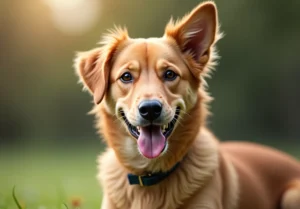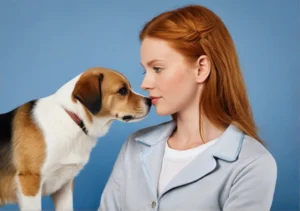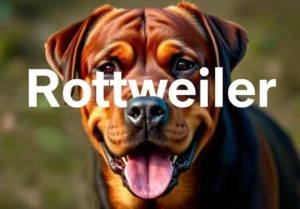Disclosure: We may earn a commission from helpful, relevant links in our content. No cost to you. See our privacy policy.
Ever noticed your furry companion’s tail wagging faster whenever your kid enters the room? It’s a sight that warms the heart, but have you ever wondered why dogs seem to have a unique love for children?
Are you curious about how these bonds form? Or why dogs seem to treat children differently from adults? Let’s dive into the fascinating world of canine behavior to better understand these delightful dynamics.
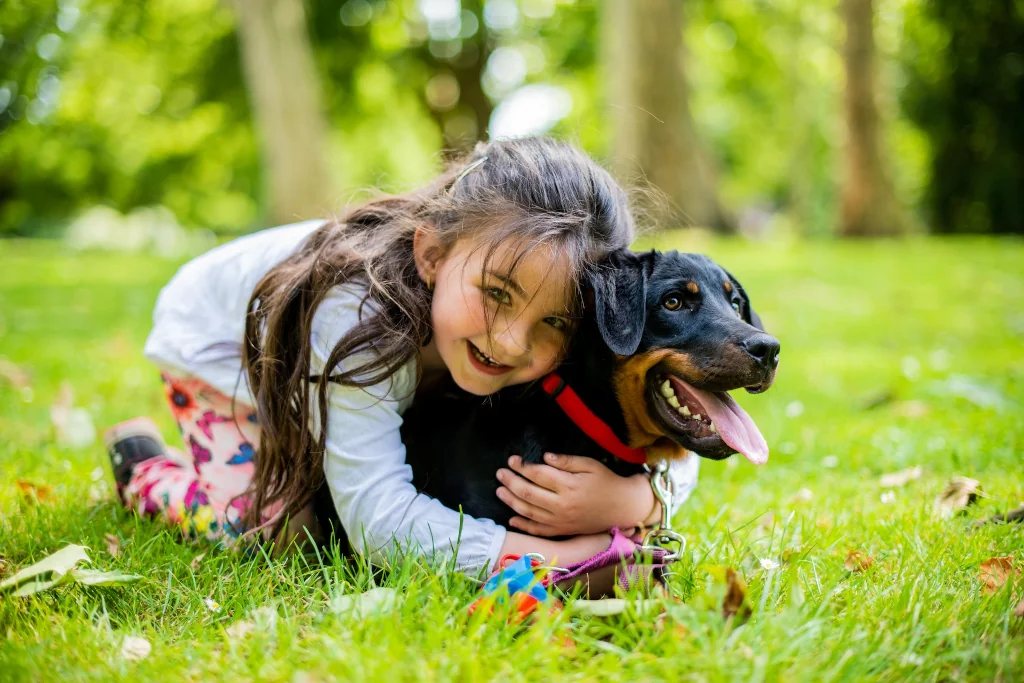
Why Does My Dog Love Kids So Much?
The love that dogs display for children is one of nature’s most endearing scenes.
It’s not just about playtime and tail wagging – it’s much deeper than that. Dogs and kids often communicate in a similar language of innocence and playfulness. This connection paves the way for a strong bond to form.
Additionally, children’s high energy levels match those of dogs, making kids the perfect play partners. The constant interaction and affection also give dogs the social stimulation they crave, thus deepening their attachment to children.
Do Dogs See Kids and Adults Differently?
Absolutely! Dogs have an uncanny ability to distinguish between adults and children, and this isn’t just based on height differences.
They can pick up on subtle behavioral cues and energy levels. Adults, in general, are more reserved and authoritative while children are lively, less predictable, and more similar to canine playmates in their play behavior. Dogs are incredibly adept at reading these cues and respond accordingly.
So, the same dog may behave playfully with your child while being more submissive or respectful towards an adult in the household. It’s part of what makes the dog-child bond so special!
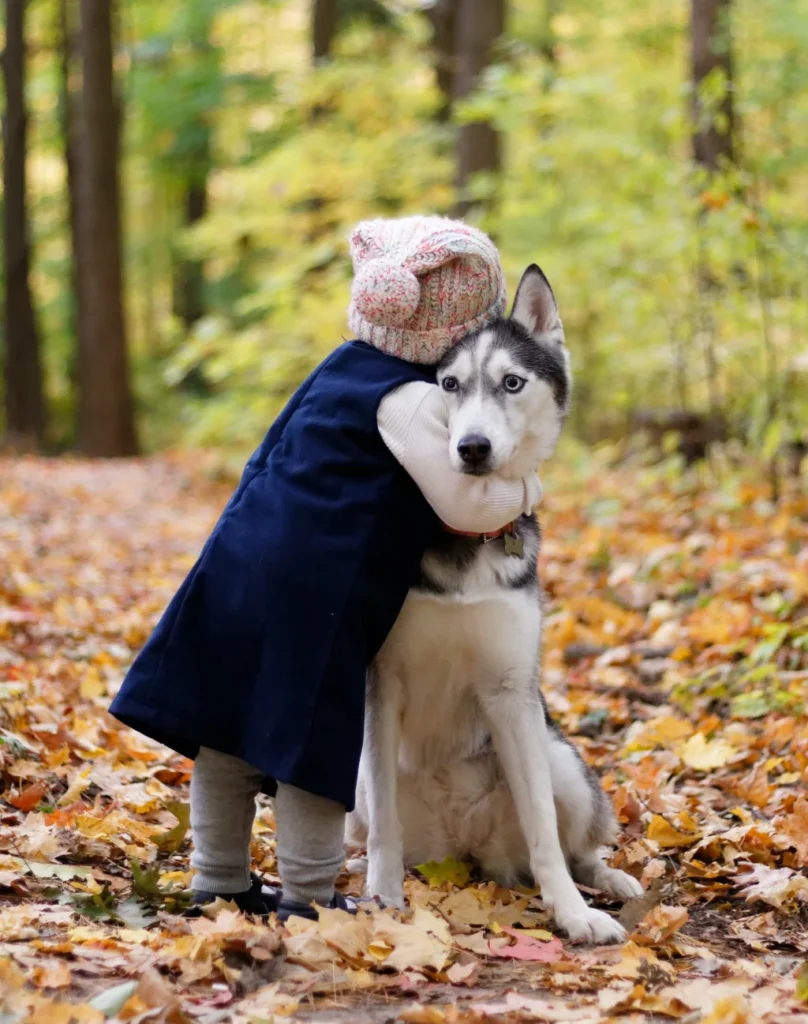
Why Are Dogs Often Gentler Around Children?
There’s something incredibly touching about seeing a big, robust dog playing gently with a toddler, isn’t there? This gentle behavior is no accident; it’s a testament to a dog’s ability to understand the vulnerability of their tiny human friends.
Firstly, dogs are highly perceptive. They understand that children are smaller and more delicate than adults, which triggers their instinct to be more careful.
Secondly, dogs can pick up on the innocent, non-threatening nature of kids and adapt their behavior accordingly.
It’s essential, however, not to assume this gentleness is a given with every dog and every child. We must remember that dogs, like humans, are individuals with their unique temperaments. Some dogs may need time and guidance to learn how to interact gently with children. It’s always critical to supervise their interaction until both are comfortable with each other.
Are Dogs Naturally Protective of Children?
Just as they can be gentle with children, dogs can also be fiercely protective of them. This protective instinct usually stems from the deep bond they develop with the kids in their family pack.
This protective behavior can manifest in different ways. Your dog might position themselves between your child and a stranger, or they might follow the child around, keeping a watchful eye on them.
This trait can be a reassuring one for parents, as it adds an extra layer of security for the child.
However, while many dogs can naturally develop this protective instinct, not all dogs will. Factors such as the dog’s breed, upbringing, and individual personality can influence their protectiveness. Training can also play a role in enhancing this trait, but it must be done with care to ensure that it doesn’t lead to overprotectiveness or aggression.
Remember, the safety of both your child and your dog is paramount. Never leave them unsupervised together until you’re confident in their mutual respect and understanding.
And always encourage positive, respectful interactions from the get-go. It will make the bonding process smoother and safer for everyone involved.
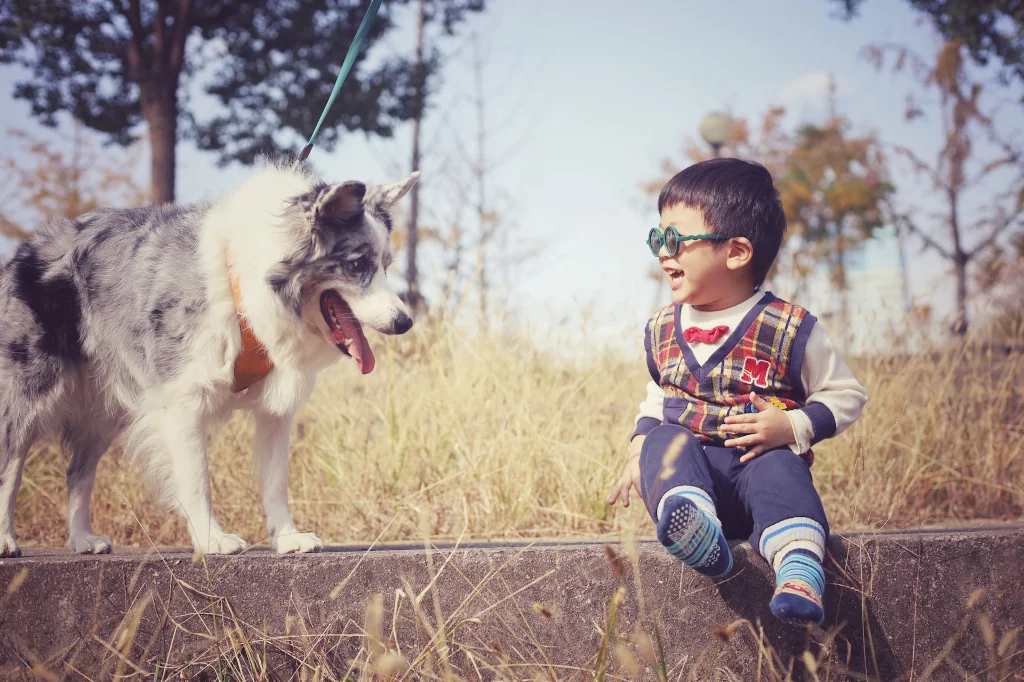
How to Encourage a Positive Relationship Between Dogs and Kids?
To ensure a strong and joyful bond between dogs and kids, some intentional guidance can work wonders. Here are some handy tips:
- Educate Your Child. Explain to your child how to approach dogs gently and respectfully. Make sure they understand the importance of not disturbing a dog when it’s sleeping or eating.
- Teach the Dog. Training your dog to behave appropriately around kids is equally important. Teach them commands like “gentle” when they’re playing with the kids, so they understand when they need to be more careful.
- Shared Activities. Encourage activities that both the child and the dog enjoy. It could be playing fetch, going for walks, or even a quiet cuddle time.
- Space for All. Ensure both your kid and your dog have their private space where they can retreat when they need some alone time.
- The Mutual Respect Rule. This one is unique but vital. Teach your child that just like humans, dogs also have feelings, and their wishes need to be respected. If the dog walks away, it means they want some space and we need to respect that.
When training your dog to interact with your kids, it might be helpful to have some structured activities. A good option could be the Outward Hound Hide-A-Squirrel Puzzle Toy. It’s a fun, interactive toy that both your child and dog can enjoy. Plus, it encourages mental stimulation for your dog, and children usually have a great time ‘helping’ their furry friends find the squirrels hidden in the tree trunk.

FAQs
Can dogs understand that kids are kids?
Dogs do recognize the difference between children and adults. They often sense children’s high energy and innocence, prompting them to interact differently with them compared to adults.
Do certain dog breeds get along better with kids?
Some dog breeds, such as Golden Retrievers, Labrador Retrievers, and Beagles, are generally known for their patience, gentleness, and friendly nature, which makes them more suitable for families with children. However, the individual dog’s personality also plays a significant role.
How do dogs show their love for kids?
Dogs show their love for kids through protective behavior, wagging their tail, licking, cuddling, and wanting to play or spend time with the kids. The exact behaviors can vary based on the dog’s breed and individual personality.
Alex, a passionate animal lover, has experience in training and understanding animal behavior. As a proud pet parent to two dogs and three cats, he founded AnimalReport.net to share insights from animal experts and expand his knowledge of the animal kingdom.


